Why Protein Matters + 4 High-Protein Breakfast Ideas
You know what unites every single client when they first start working with me? They are all under eating protein.
I get it because I used to be them. I’ve always eaten more protein than most (I was one of those obsessive Paleo people back in the day), but it wasn’t until the past couple of years that I’ve really understood the value a high-protein diet provides.
Every couple of weeks a new study adds to the mounting evidence that muscle health is king. You want to age well? Make sure you build, maintain, and constantly pump-up those muscles. Turns out, muscle has way more jobs than just helping you run and jump, your muscle is also:
- Crucial for your metabolic health, especially glucose metabolism and insulin sensitivity. The more muscle you have the more storage you’ve got for glucose.
- Playing a part in your hormone balance by producing insulin-like growth factor 1 (IGF-1) and myokines. These hormones play roles in metabolism, inflammation, and overall health.
- Contributing to your basal metabolic rate (BMR), the amount of energy expended at rest. Higher muscle mass can help maintain a healthy weight and metabolism.
- Helping to keep your bones healthy. Strong muscles exert force on bones, which helps maintain bone density and strength, reducing the risk of fractures.
- And more! If you’re really interested in the topic, I recommend Dr. Gabrielle Lyon’s book Forever Strong, which breaks down all the science.
So besides resistance training, how do you support your muscle health?
By eating enough protein to maintain your current mass and fuel muscle protein synthesis (the building of new muscle). Unless you’ve been following the latest scientific research, I’m pretty sure you’ll be shocked by just how much that is.
If you are an adult women out there doing adult things, that means at a MINIMUM 100 grams of protein per day. When a client is working on body composition or is dealing with insulin resistance that number gets higher. The general rule of thumb is whatever your ideal body weight is, you eat the equivalent in protein grams per day. Of course there are going to be bio-individual differences, but it works for most. For example, if you’re a 170 pound person but your ideal body weight is actually 140, then 140 grams of protein is your daily target.
Do you know what 140 grams of protein looks like? I’m guessing the answer to that is no. Unless you’ve been tracking your food, it’s very hard to grasp how much food that is.
This is why I recommend tracking. Yes, tracking. There is a time and a place for it, y’all. You can use it as a tool to understand how you’re fueling your body versus to torture yourself over how many calories you’re consuming. As they say, you can’t improve what you don’t measure.
So, where is the best place to start when upping your daily protein grams? Breakfast, that’s where. Why? Oh so many reasons including overall improvement to daily blood sugar balance, satiety, kicking off your metabolic processes first thing in the AM, AND it’s extremely helpful in reaching your overall protein goal later in the day. If you can manage to hit 50 grams of protein before noon, then you’ll have no problem hitting 100 grams by dinnertime.
As an example, here are my current go-to high-protein breakfasts that I rotate through depending on my mood.
1. Cottage Cheese+
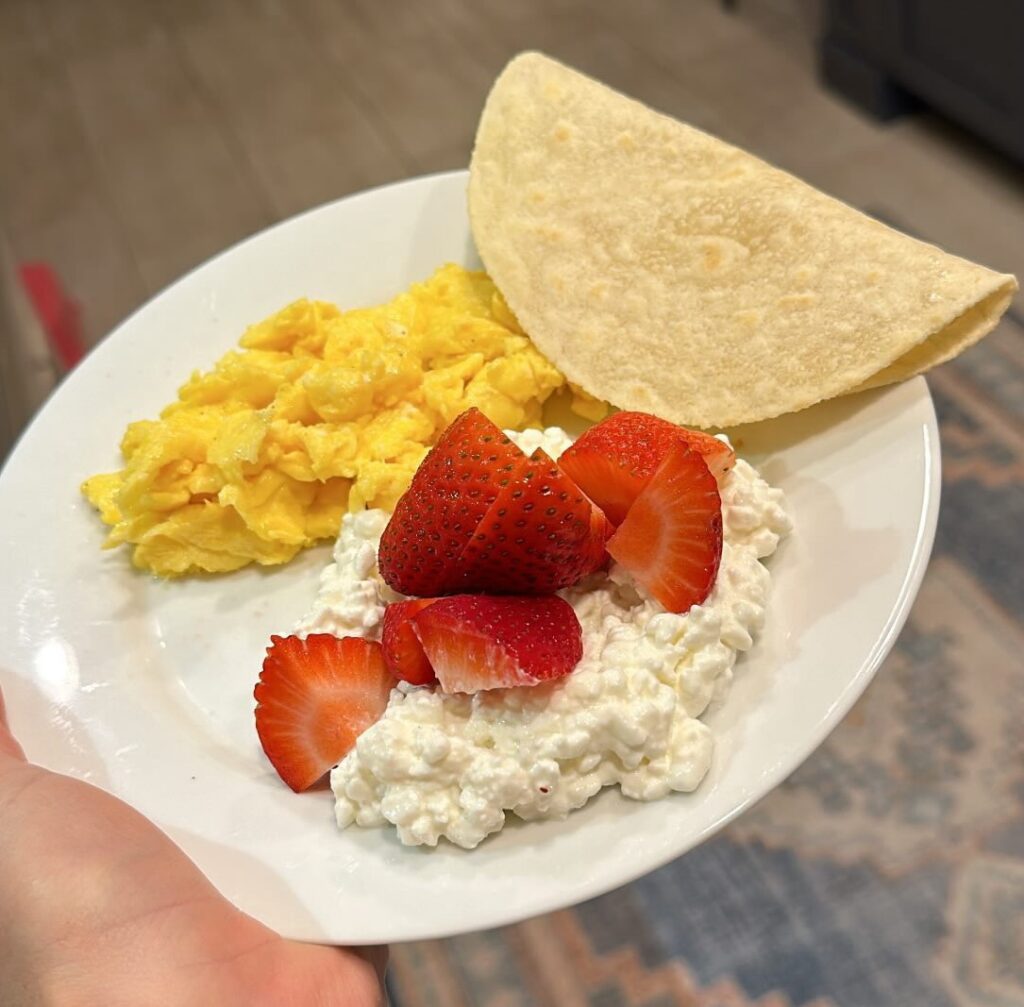
Low-fat dairy is a protein hack y’all. I love pairing a serving cottage cheese with berries, then having about 1.5 eggs on a Siete almond flour tortilla with microgreens (not pictured). You can mix it up by adding some bacon or beans to your taco.
Here’s a breakdown of the macros:
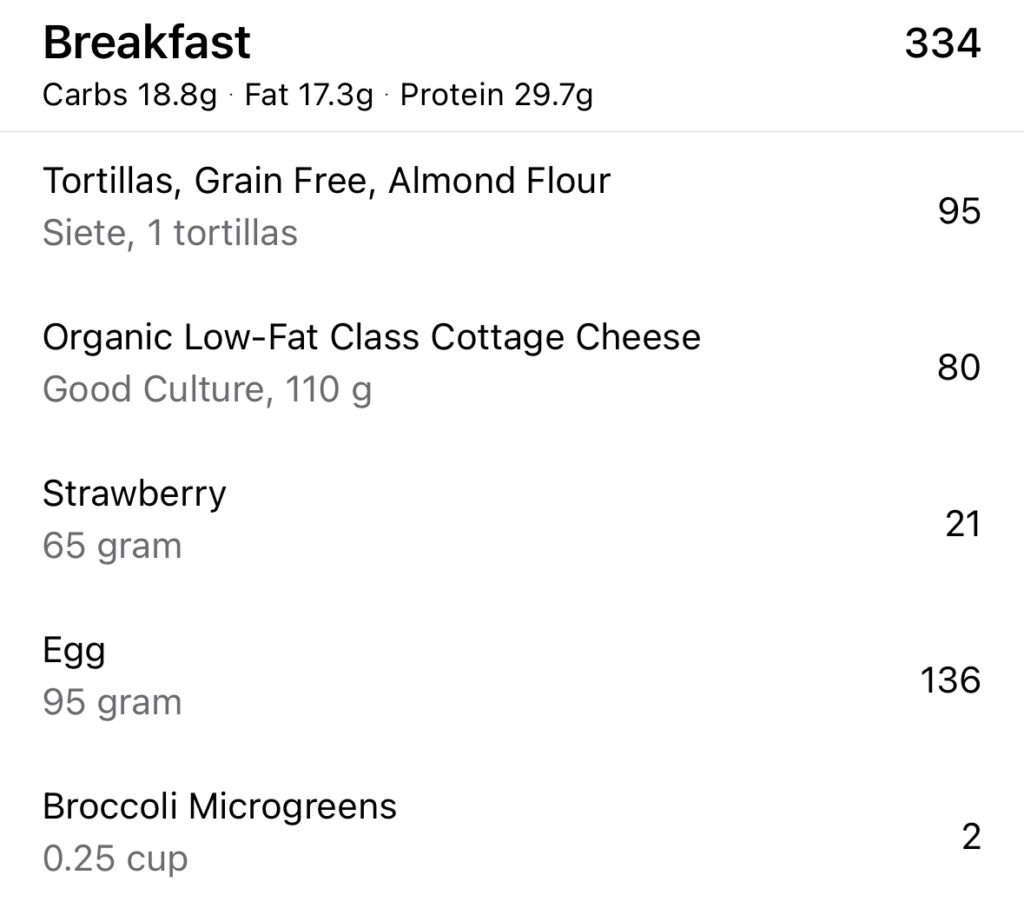
2. Low-fat greek yogurt+
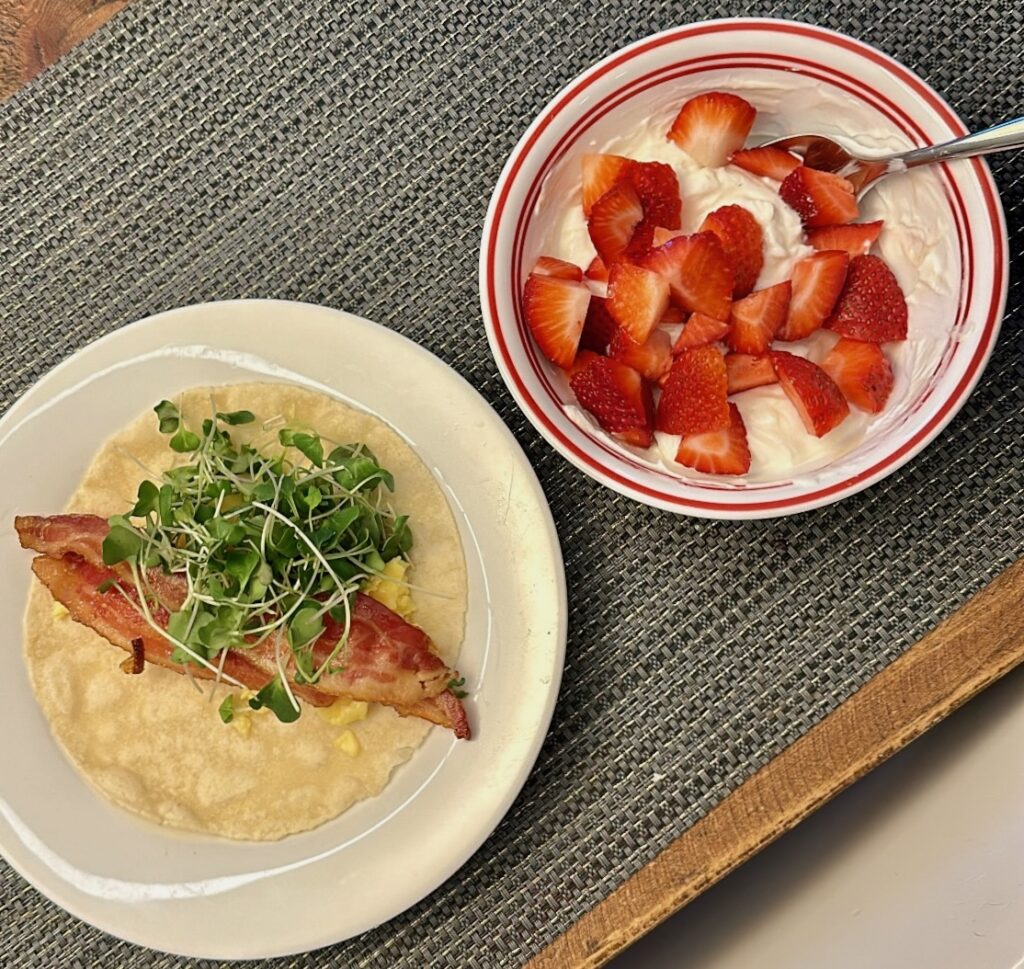
Same as the above, just a different high-protein dairy base. I add honey to take away the sourness of the yogurt, then serve with berries. I always have some version of a breakfast taco to go with.
Here are the macros:

3. Overnight Oats
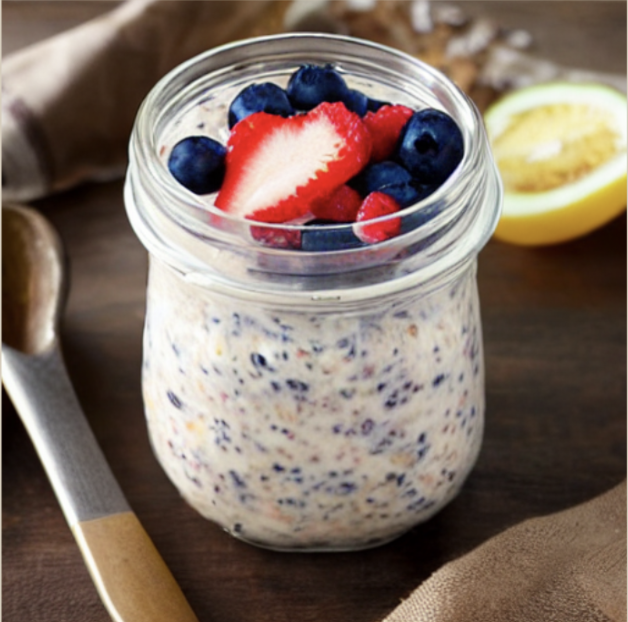
One of my favorite meal-prep friendly options. This is my go-to base recipe, you can spice it up by adding different fruits, nut butters, flavored protein powder, or nutrient boosters (think ground flax). I always serve with a handful of berries on top. There’s about 30 grams of protein per serving depending on the type of protein powder you select and/or other additions you make.
Here’s the base recipe:
- 1/3 cup oats
- 1 scoop unflavored bone broth protein (or collagen peptides)
- 1 Tbsp chia seeds
- 1/3 cup low-fat plain greek yogurt
- 1 Tbsp maple syrup
- 1/2 cup almond milk (less if you want it thicker)
- 1/4 tsp vanilla bean paste (you can also use extract)
- A shake of cinnamon
Mix it up and store it in the fridge overnight. As long as you keep it cold it’ll stay good for 3-5 days.
- Calories = 380
- Protein = 31 grams
- Fat = 8 grams
- Carbs = 44 grams
4. Pancake Sammy
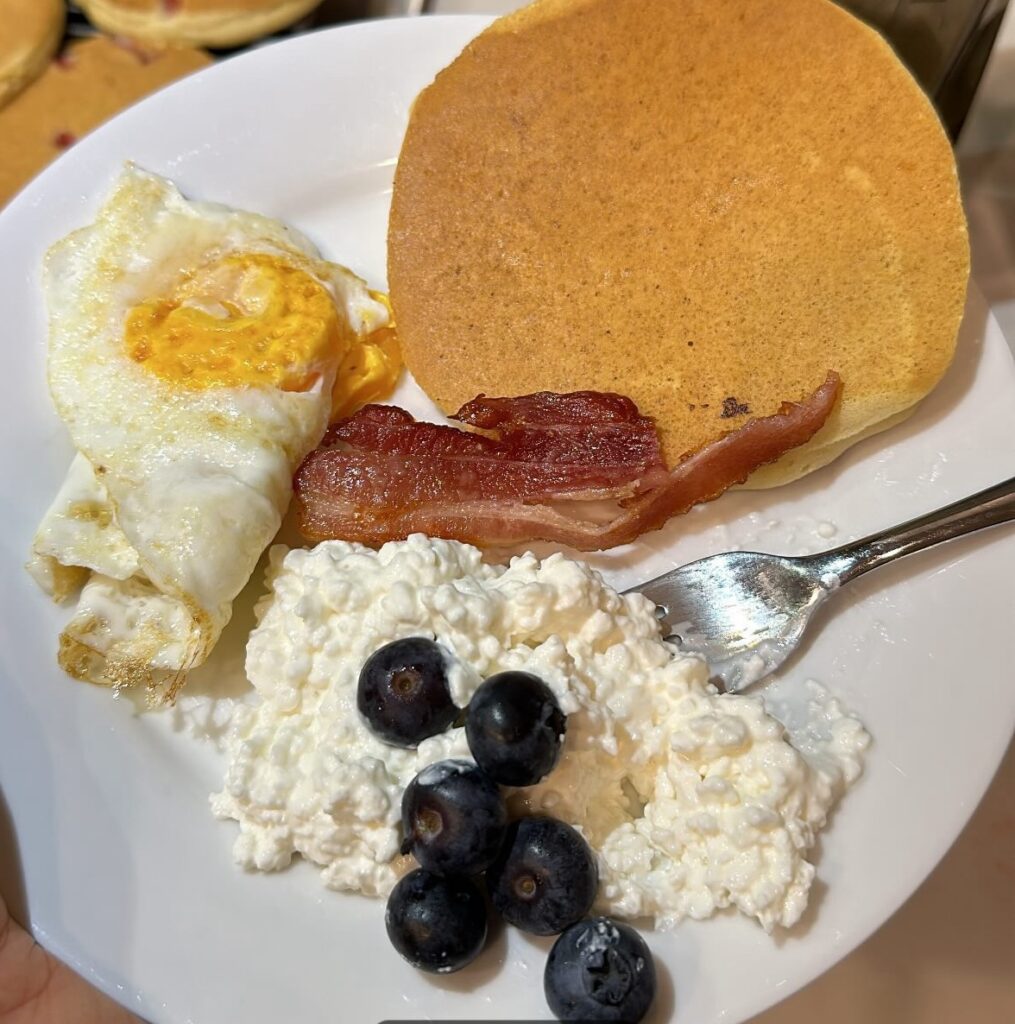

A weekend staple in our house. My kids always want pancakes on Sunday mornings, so I add at least 3 scoops of bone broth protein to whatever recipe I’m using. I always have 1 pancake split in half (like a sandwich) with bacon and/or eggs in the middle. Way better than bread! Then I combine that with a serving of cottage cheese or yogurt to push me closer to 30 grams of protein.
Here’s the macros:
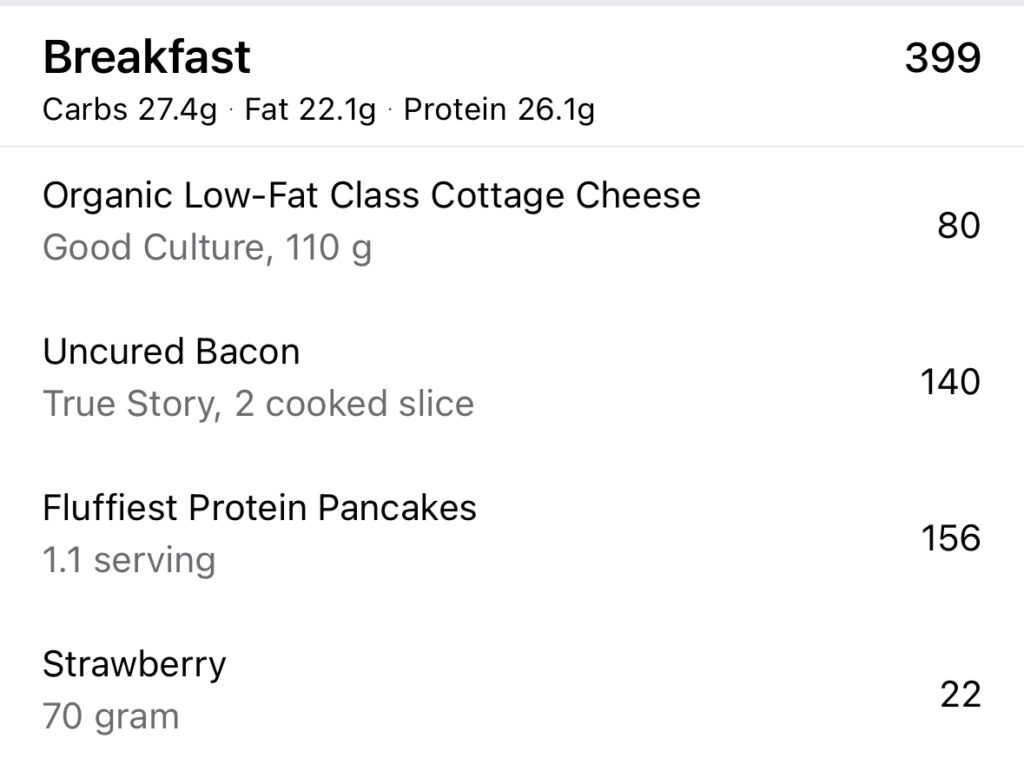
Now that you’ve got some easy breakfast ideas, my challenge to you this week is to pick 2-5 days to weigh/measure and write down everything you eat. Then you can enter it into a tool like MyFitnessPal to see how many grams of protein you consumed. You need this benchmark at the ready so you know where to add in additional protein grams. Ideally, you’d do this for more than 1 day so you can get an average, but you have to start somewhere.
Lastly, If you need some inspiration to better understand what 100 grams of protein per day looks like and ways to increase protein, then you’re in luck. Drop your email below and I’ll send over 3 of my client resources:
- Example 100 g per day journal entries
- Tips for eating more protein
- A booklet of 25 high protein breakfast ideas
If you’ve got more questions don’t be shy. Send me an email at amber@amberdawnwellness.com or send me a DM on Instagram.
Happy eating!